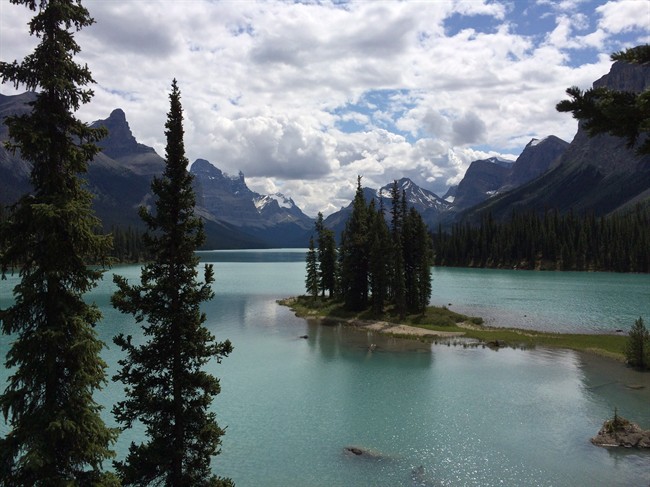A new report from the Canadian Parks and Wilderness Society (CPAWS) is slamming Parks Canada for focusing too much on tourism and not enough on conservation.

It could lead to further destruction of our wildlife, CPAWS national executive director Éric Hébert-Daly explained.
“We’ve seen a dramatic shift in how Parks Canada is managing our parks over the past decade,” Hébert-Daly said in an email to Global news.
This shift of focus to marketing and tourism comes “at the expense of the very nature our national parks are supposed to protect.”
The report, released Monday, says developments like a bike path in Jasper or an expansion of the Lake Louise ski resort, are damaging legally protected wilderness.
READ MORE: Alberta environmentalists express concern over proposed Jasper bike trail
It also says that, in response to budget cuts, Parks Canada slashed the conservation and science side in 2012, while double the dollar amount went to tourism and development.
“As of 2015/16, only 13 per cent of Parks Canada’s spending on national parks was dedicated to conservation,” he said.
WATCH: Latest environmental news
It’s a problem, he said, because less than half of our country’s assessed parks’ ecosystems were in good health, with 41 per cent of parks not even being measured, according to the latest Parks Canada report from 2012. More than one third of assessed ecosystems were in trouble.
“National Parks are one of the top symbols of Canadian identity, along with the Charter of Rights and Freedoms, health care, and the flag,” Hébert-Daly said.
“If the most protected parts of our wilderness in Canada are under threat, where does that leave nature in general in our country?”
Another major issue raised in the report is the lack of public input. For example, Hébert-Daly explained that the Lake Louise Ski Resort expansion project only had three weeks to review the technical documents. While over 1,000 people sent in complaints, no major changes were made to the proposal.
In response to the report, Parks Canada defended their mandate saying they are committed to “expanding the system of protected places and contributing to the recovery of species-at-risk.”
“At the same time, we must continue to develop new and innovative programs and services to enable more Canadians, including youth and newcomers, to experience the outdoors and learn about our environment.” Parks Canada spokesperson Audrey Champagne said.
“By building connections to these places, we can foster the stewards of tomorrow — people who know and care about these irreplaceable treasures.”
READ MORE: ‘We’re at risk of losing a lot of species’: The race to save Canada’s wildlife
Champagne also stated that there are strict development limits, and ensures that all “proposals comply with these limits.”
She also said the minister of environment will host a round table this coming fall on a variety of topics, including ones mentioned in the report.
At risk of ‘loving them to death’
Hébert-Daly says even though national parks are legislated to “conserve wilderness for the enjoyment of future generations,” we are at risk of “loving them to death.”
“We support encouraging people to get outside to learn about and appreciate nature, but we can’t do it at the expense of nature itself,” Hébert-Daly said.
The report states that in the late 1990s and early 2000s, Parks Canada’s focus was on “ecological integrity first,” and tourists were attracted “to the right place at the right time, in the right numbers.”
But now, it states that Parks Canada’s current focus is to attract “park visitors to all places regardless of how overcrowded they are, in the biggest numbers possible.”
The proposed bike path in Jasper national park, for example, would run “right through sensitive caribou habitat for a herd that only has 10 remaining animals.”
But not all is lost, Hébert-Daly said. The current government in Ottawa has already stopped development on the giant Mother Canada statue in Cape Breton. It’s a good step forward, but much more needs to change.
The report, along with 17 recommendations, was sent to the environment minister.
CPAWS is a charity dedicated to the protection of public land resources, and ensuring correct management of them.
READ THE FULL REPORT:
- Calgary fatal stabbing victim ‘gave himself’ to help those fleeing war in Ukraine
- Innovative nursing education: Mannequins lead the way in Alberta
- Calgary police looking for suspect in March southeast hotel homicide
- Alberta introduces legislation to reduce high power-bill fee surcharge for Calgarians













Comments